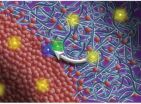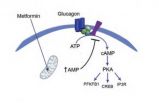(Press-News.org) Los Angeles, CA (January 07, 2013). France has been held up, worldwide, as the forerunner in using nuclear fission to produce electricity. However, a third of the nation's nuclear reactors will need replacing in the next decade, and public opinion has shifted toward reducing reliance on nuclear power. In a special issue of the Bulletin of the Atomic Scientists, published by SAGE four articles explore whether France has the means or desire to unplug from nuclear power.
Nuclear arms experts Patrice Bouveret, Bruno Barrillot, and Dominique Lalanne argue that phasing out Frances' civilian nuclear program would entail costs both to military funding streams, and to the nation's identity. In their provocative article, "Nuclear chromosomes: The national security implications of a French phase-out," they explain that weapons channels are distinct from the power industry. However, as civilian and military nuclear programs have been intertwined for decades, cutting financing for civilian nuclear research projects would increase the cost of maintaining the nuclear arsenal. The extent to which the military and civilian budgets are shared and expenses transferred between them is impossible to quantify – a deliberate move by defense staff to maintain secrecy.
"From its beginnings after World War II, the French nuclear effort has occupied an exalted position in the country's national identity. In fact, one could reasonably argue that it would take a reimagining of that identity, and a reconsideration of France's nuclear deterrent, before a French exit from civilian nuclear power could become a serious possibility," Bouveret argues.
France's nuclear program has been closely linked to the idea of a strong and economically independent France since its introduction following World War II. State-controlled Électricité de France SA (EDF) provides three-quarters of the country's electricity via nuclear power plants; another majority-state-owned firm, Areva SA, is a supplier of nuclear reactors and other nuclear technologies, such as nuclear submarines, worldwide. As a result, France has invested heavily in nuclear infrastructure, and has not yet followed its neighbor Germany in moving to reduce reliance on nuclear power in the wake of the 2011 disaster at the Fukushima Daiichi Nuclear Power Station.
But Paris-based energy expert Mycle Schneider highlights serious financial difficulties on the horizon for both EDF and Areva as the French nuclear fleet ages: 22 of the country's 58 reactors will reach their 40-year lifetimes inside a decade. Extending the lives of these reactors or scaling down the nuclear sector to focus on alternative energy and energy-efficiency programs would seem viable options.
Yet the politics of such a choice are complex, as Schneider writes in a separate article. France's new president, François Hollande, is the first in French history to advocate reducing reliance on nuclear power, and to instigate an extended multi-stakeholder debate on this subject. The legalities are not simple either: According to Paris-based environmental lawyer Alexandre Faro, laws, regulations, or amendments would have to be carefully drawn to avoid large damage claims from the nuclear operator, EDF.
John Mecklin, deputy editor of the Bulletin of the Atomic Scientists, concludes in his introduction that "Economics, politics, and legalities notwithstanding, before France can exit the nuclear power industry, it may have to change its idea of itself."
###
"Nuclear chromosomes: The national security implications of a French nuclear exit" by Patrice Bouveret, Bruno Barrillot, and Dominique Lalanne published January 2013 in The Bulletin of the Atomic Scientists.
"The French Nuclear Exit?" by John Mecklin published January 2013 in The Bulletin of the Atomic Scientists.
Select articles from the issue will be free to access from a limited time here: http://bos.sagepub.com/.
The Bulletin of the Atomic Scientists informs the public about threats to the survival and development of humanity from nuclear weapons, climate change, and emerging technologies in the life sciences. The Bulletin was established in 1945 by scientists, engineers, and other experts who had created the atomic bomb as part of the Manhattan Project. http://bos.sagepub.com
SAGE is a leading international publisher of journals, books, and electronic media for academic, educational, and professional markets. Since 1965, SAGE has helped inform and educate a global community of scholars, practitioners, researchers, and students spanning a wide range of subject areas including business, humanities, social sciences, and science, technology, and medicine. An independent company, SAGE has principal offices in Los Angeles, London, New Delhi, Singapore and Washington DC. www.sagepublications.com END
A French nuclear exit?
2013-01-07
ELSE PRESS RELEASES FROM THIS DATE:
Timely reminders boost childhood immunizations rates
2013-01-07
AURORA, Colo. (Jan. 7, 2013) – New research from the Children's Outcomes Research Program at Children's Hospital Colorado shows that timely reminders by state or local health departments are more effective at increasing immunization rates among preschool children than those from primary care practices.
The study, published December 13 in the American Journal of Public Health, underscores the importance of partnerships between state and county health departments and primary care practices to keep children up-to-date on recommended vaccines.
"Immunizations provide ...
Racial essentialism reduces creative thinking, makes people more closed-minded
2013-01-07
New research suggests that racial stereotypes and creativity have more in common than we might think.
In an article published in Psychological Science, a journal of the Association for Psychological Science, researcher Carmit Tadmor of Tel Aviv University and colleagues find that racial stereotyping and creative stagnation share a common mechanism: categorical thinking.
"Although these two concepts concern very different outcomes, they both occur when people fixate on existing category information and conventional mindsets," Tadmor and her colleagues write.
The researchers ...
New path to more efficient organic solar cells uncovered at Berkeley Lab's advanced light source
2013-01-07
Why are efficient and affordable solar cells so highly coveted? Volume. The amount of solar energy lighting up Earth's land mass every year is nearly 3,000 times the total amount of annual human energy use. But to compete with energy from fossil fuels, photovoltaic devices must convert sunlight to electricity with a certain measure of efficiency. For polymer-based organic photovoltaic cells, which are far less expensive to manufacture than silicon-based solar cells, scientists have long believed that the key to high efficiencies rests in the purity of the polymer/organic ...
How the kilogram has put on weight
2013-01-07
Post-Christmas and most of us are feeling the over-indulgence. But take heart - experts at Newcastle University, UK, have shown even the kilogram itself has put on weight. Using a state-of-the-art Theta-probe XPS machine – the only one of its kind in the world – the team have shown the original kilogram is likely to be tens of micrograms heavier than it was when the first standard was set in 1875.
And they say a suntan could be the key to helping it lose weight.
The original kilogram – known as the International Prototype Kilogram or the IPK – is the standard against ...
New antimatter method to provide 'a major experimental advantage'
2013-01-07
Researchers have proposed a method for cooling trapped antihydrogen which they believe could provide 'a major experimental advantage' and help to map the mysterious properties of antimatter that have to date remained elusive.
The new method, developed by a group of researchers from the USA and Canada, could potentially cool trapped antihydrogen atoms to temperatures 25 times colder than already achieved, making them much more stable and a lot easier to experiment on.
The suggested method, which has been published today, 7 January 2013, in IOP Publishing's Journal of ...
Most-used diabetes drug works in different way than previously thought
2013-01-07
PHILADELPHIA - A team, led by senior author Morris J. Birnbaum, MD, PhD, the Willard and Rhoda Ware Professor of Medicine, with the Institute for Diabetes, Obesity, and Metabolism, Perelman School of Medicine, University of Pennsylvania, found that the diabetes drug metformin works in a different way than previously understood. Their research in mice found that metformin suppresses the liver hormone glucagon's ability to generate an important signaling molecule, pointing to new drug targets. The findings were published online this week in Nature.
For fifty years, one ...
Genetic mystery of Behcet's disease unfolds along the ancient Silk Road
2013-01-07
Researchers have identified four new regions on the human genome associated with Behcet's disease, a painful and potentially dangerous condition found predominantly in people with ancestors along the Silk Road. For nearly 2,000 years, traders used this 4,000-mile network linking the Far East with Europe to exchange goods, culture and, in the case of the Silk Road disease, genes. National Institutes of Health researchers and their Turkish and Japanese collaborators published their findings in the Jan. 6, 2013, advance online issue of Nature Genetics.
Named for the Turkish ...
From the Amazon rainforest to human body cells: Quantifying stability
2013-01-07
As they typically result from severe external perturbations, it is of vital interest how stable the most desirable state is. Surprisingly, this basic question has so far received little attention. Now scientists of the Potsdam Institute for Climate Impact Research (PIK), in a paper published in Nature Physics, propose a new concept for quantifying stability.
"Up to now, science was able to say if a complex system is stable or not, but it wasn't able to properly say how stable it is," says Peter J. Menck, lead author of the paper. The proposed concept is the first to fill ...
A new approach to assessing future sea level rise from ice sheets
2013-01-07
The study, published today in Nature Climate Change, is the first of its kind on ice sheet melting to use structured expert elicitation (EE) together with an approach which mathematically pools experts' opinions. EE is already used in a number of other scientific fields such as forecasting volcanic eruptions.
The ice sheets covering Antarctica and Greenland contain about 99.5 per cent of the Earth's glacier ice which would raise global sea level by some 63m if it were to melt completely. The ice sheets are the largest potential source of future sea level rise – and ...
The pain puzzle: Uncovering how morphine increases pain in some people
2013-01-07
Quebec City & Toronto, January 6, 2013—For individuals with agonizing pain, it is a cruel blow when the gold-standard medication actually causes more pain. Adults and children whose pain gets worse when treated with morphine may be closer to a solution, based on research published in the January 6 on-line edition of Nature Neuroscience.
"Our research identifies a molecular pathway by which morphine can increase pain, and suggests potential new ways to make morphine effective for more patients," says senior author Dr. Yves De Koninck, Professor at Université Laval in ...

